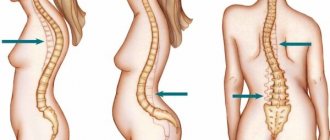3418 0
Rheumatoid arthritis (RA) is a serious disease of autoimmune etiology. During the development of the disease, connective tissue is affected at the cellular level; as a rule, dystrophic disorders occur in the area of small peripheral joints.
When the general condition of a sick person gradually worsens, and the stages of exacerbation occur with an increase in the intensity of symptoms, we can talk about temporary loss of disability. Even if modern treatment methods used for rheumatoid arthritis do not bring the desired recovery, a medical and social examination is carried out, based on the results of which the patient is diagnosed with a disability of one or another group.
Do arthritis give you disability?
As mentioned above, a disability group is given, but only in cases where the patient suffers from a severe form of chronic arthritis, which cannot be cured and put into remission, at least in the coming months. The disease seriously limits his activities and deprives him of the opportunity to live a full life and work.
When is temporary disability issued?
Temporary disability is of three types:
- For 1 month. Issued to persons with exacerbation of arthritis, provided that the condition is satisfactory, the ability to work is almost not lost, and the disease itself responds well to treatment.
- For 2-3 months. There is an exacerbation with a pronounced inflammatory process. The patient is being treated as an inpatient in the rheumatology department.
- For 3-5 months. The patient feels very bad, treatment is difficult, and there are indications for surgical intervention.
In what cases can they be given disability?
The decision to issue a disability certificate to a person is made by the medical and social service. The following factors have a positive impact on obtaining a disability group:
- rapidly progressive disease spreading to many joints;
- visceral-articular form of the disease, including damage to the musculoskeletal system, kidneys and joints;
- stage 2 or 3 arthritis, affecting the knee and hip joints;
- serious impairment of motor function that prevents the patient from engaging in his work activities.
What disability group for arthritis can be given?
Depending on the level of tissue damage and the degree of disability, a patient with arthritis may be given one of three disability groups:
- First group. Arthritis in a severe advanced stage. The patient requires the help of third parties, since he is not able to care for himself.
- Second group. The patient is independent in household chores, and during the period of remission is able to perform light physical work. Limited joint mobility is moderate; to facilitate movement, the patient can use a cane, crutch or wheelchair.
- Third group. Mild to moderate arthritis. The patient can care for himself and perform work tasks, but with some restrictions on the load on the limbs.
What forms of arthritis cause disability?
Most often, patients with rheumatoid arthritis suffer from disability: this form of the disease is quite severe and has practically no cure. But patients with one of the following forms of arthritis can also receive the group:
- Septic: develops against the background of an infectious, viral, fungal or parasitic lesion of the joint cavity.
- Reactive: arthritis affects the joints after the body has been attacked by an infection (nasopharyngeal, genitourinary, intestinal).
- Gouty: This arthritis is caused by the deposition of uric acid in the joints and tissues.
- Psoriatic: chronic arthritis that develops against the background of psoriasis. Treatment is aimed only at relieving pain and symptoms.
- Juvenile rheumatoid: The disease occurs only in children and adolescents under 16 years of age.
Related article: Disability in psoriatic arthritis
General characteristics of the disease
Rheumatoid arthritis is a systemic disease that affects connective tissue, resulting in an inflammatory process in small joints. This disease is common; according to statistics, it affects from 0.5 to 2% of the world's population.
Rheumatoid arthritis also affects the general health of the patient; scientists have proven that people suffering from this disease live 5-7 years less than others. It is often impossible to accurately determine the etiology of the disease. Possible causes of rheumatoid arthritis include:
- disorders in the endocrine system;
- genetic predisposition (inherited);
- the presence of various viral diseases (hepotavirus, paramyxovirus, herpes).
Signs of a person's predisposition to such a disease are frequent respiratory and colds, hypothermia, increased insolation, exposure to toxic substances, taking medications, and stress.
Disability for rheumatoid arthritis (polyarthritis) is given to patients whose constantly progressive chronic disease is in the advanced stage. The result of lack of treatment is complete or partial immobility of the joints.
It is almost impossible to track the dynamics of arthritis development over the course of a year. This is due to an autoimmune process - healthy connective tissues are infected by the body’s own immune cells, which cease to distinguish between foreign and self-cells.
Unfortunately, rheumatoid arthritis can also develop in children, affecting not only the joint region, but also other systems and organs.
The manifestations of rheumatoid arthritis are quite varied:
- stiffness of joints in the affected area;
- constant presence of pain;
- deforming or degenerative-dystrophic changes in the joint.
Usually lesions occur in several at the same time. In medicine, this condition is called polyarthritis. It often affects the small joints of the legs and arms, rarely the disease manifests itself in the elbow or knee joints. Over a long period, the course of the disease is asymptomatic.
The following signs may be added to the main symptoms:
- formation of rheumatoid cones (nodules);
- dry skin;
- sensitivity disorders;
- brittle nails;
- failure of the functionality of the gastrointestinal tract;
- subcutaneous hemorrhages;
- signs of endocardial and cardiac muscle disease.
With complications, the disease spreads, affecting the kidneys (amyloidosis or glomerulonephritis appears), and scleritis develops. Changes in the blood often occur.
Functional classes of rheumatoid arthritis
Rheumatoid arthritis is divided into four functional classes:
- Class 1: joints are slightly affected. The disease does not interfere with self-care and professional activities.
- Class 2: self-care functions are preserved, but work activity is hampered by pain.
- Class 3: the person is still able to take care of himself, but his work activity is completely impaired.
- Grade 4: The patient suffers from severe pain that makes it impossible for him to take care of himself and work.
The process of development of metabolic polyarthritis
Symptoms of polyarthritis of the fingers depend on the cause of the disease, but for all nosological forms there are common signs:
- Symmetry of joint damage;
- Morning stiffness;
- Improved mobility in the evening.
Let's try to look at the key signs of the main types of disease.
It is customary to divide rheumatoid arthritis into several types.
How to effectively treat lumbar radiculitis at home
- Knee joints;
- Ankle;
- Elbows;
- Metacarpophalangeal;
- Metatarsophalangeal joints.
Causes of pathology marble disease and its treatment
There are a number of specific features of psoriatic polyarthritis:
- Periodic joint pain;
- The appearance of swelling;
- Aches and stiffness;
- Fatigue;
- Fever.
- Folk remedies;
- Medications;
- Physiotherapy.
Folk remedies
Have you been trying to heal your JOINTS for many years?
Head of the Institute for Joint Treatment: “You will be amazed at how easy it is to heal your joints by taking it every day.
But rheumatoid arthritis is a disease that has many subtypes.
Seronegative RA, ICD-10 code – M-06.0:
- Still's disease in adults – M-06.1;
- bursitis – M-06.2;
- rheumatoid nodule – M-06.3;
- inflammatory polyarthropathy – M-06.4;
- other specified RA – M-06.8;
- seronegative RA, unspecified – M-06.9.
History says that arthritis and similar diseases were known to our ancestors.
The history of Egypt determines that rheumatoid arthritis was a leading disease in this country.
History 1858: B Garrod names the causes that distinguish rheumatoid arthritis, osteoarthritis and gout.
History of the Far East: in case of illness, acupuncture is used as treatment.
The famous figure Hippocrates used willow extracts to relieve pain during illness.
1929 story: Leroux names the drug salicylic acid as a relief for arthritis pain.
Have you been struggling with JOINT PAIN for many years without success?
Head of the Institute: “You will be amazed at how easy it is to cure your joints by taking the product for 147 rubles every day.
In especially severe cases, the patient undergoes surgery to restore the functionality of the joint.
How to apply for disability due to arthritis: steps in stages
First of all, the patient must receive a referral from the local physician to undergo a medical and social examination. Further actions occur in several stages:
- Meeting with ITU members. At the meeting, you need to tell your medical history, the nature of the disease and complaints. At this stage, you will be given a referral for a comprehensive examination: it will be able to confirm or refute the need to assign a disability group.
- Comprehensive examination: includes MRI, CT, radiography and laboratory diagnostics.
- Providing research results: To complete the picture, be sure to provide the commission with the results of previous studies. Make copies of the documents and attach them to your file.
Note ! If the case of the disease is controversial and there is a possibility of curing the arthritis, the commission may order a series of repeated diagnostic procedures.
Factors influencing decision making
Before making a verdict on assigning a disability group to a patient, members of the medical and social commission get acquainted with the results of the examination, focusing on the following factors:
- stage of the disease at the time of x-ray examination;
- the severity of the disease and its impact on the patient’s well-being;
- frequency of exacerbations;
- a form of rheumatoid arthritis;
- average duration of relapses;
- the influence of therapeutic treatment on the patient’s condition;
- the patient’s independence and his need for help from third parties.
Note! Members of the commission pay attention to the patient’s use of auxiliary devices for people with disabilities: crutches, a cane or a wheelchair.
Classification of the disease, which is taken into account by the commission members
Rheumatoid arthritis in medical practice is divided into three degrees of severity:
- First degree: the patient can take care of himself and work, arthritis only slightly hinders his actions. The surrounding organs are not involved in any way in the pathological process. Disability for rheumatoid arthritis in women and men is not formalized.
- Second degree: restrictions in self-care and work activity are weakly expressed. There is some stiffness and signs of minor damage to the skin. The pain worsens with movement and physical activity. Disability is issued at the discretion of the commission.
- Third degree: arthritis affects both professional activities and basic self-care. The pain is severe and sharp, most often worsening in the morning. The pathological process affects other organs and systems. Disability is granted in most cases.
Criteria for assigning temporary disability
The duration of the sick leave depends on the severity of the symptoms of the disease. For grade 1 rheumatoid arthritis, it is issued for 30 days; the indication for extension is the rapid development of the disease and its transition to the next stage. A certificate of temporary incapacity for work for a period of 3 months is issued after surgery to remove the joint capsule. In the articular-visceral form of the pathological process, this period increases to 120 days.
The patient's return to work is subject to some restrictions. It is contraindicated to work in conditions of low or high temperatures, high humidity and polluted areas. It is prohibited to perform high-altitude work or maintain dangerous equipment. You will have to give up activities associated with prolonged standing or sitting, or lifting weights. Work that requires extreme precision is also contraindicated.
We also recommend this video about how to treat arthritis without pills:
How is functional joint insufficiency determined?
The main function of joints is to provide mobility. Each of the joints of the human body has a normal range of motion, expressed in degrees. Deviation from this indicator indicates functional insufficiency of the joint - there are four degrees in total:
- First degree. Movement of the hand is possible in the range from 110 to 170°, in the hip joints movements are limited to no more than 30°, in the elbows, wrists, ankles and knees - no more than 50°.
- Second degree. The grip function in the hands is impaired, movements are limited to 55°, in the shoulder and hip joints - up to 50°. In the wrists, elbows, knees and ankles - up to 45°.
- Third degree. Movement of all joints is possible within 15°, or they are immobilized in a functionally advantageous position.
- Fourth degree. The joints are immobilized in a functionally disadvantageous position.
Physical rehabilitation
This is therapeutic massage and exercise therapy. They are carried out:
- in the hospital - treatment by position, passive and active movements in the joints;
- in a clinic or sanatorium - exercises to strengthen muscles, stretch the ligaments of affected joints;
- at home - systematic independent training.
During the period of remission, patients under 60 years of age are recommended to ski walking, swimming, rowing, playing volleyball, and tennis. Elderly people are only allowed to walk.
Who is referred for MSE for rheumatoid arthritis?
Patients with severe arthritis complicated by the following factors are referred for medical and social examination:
- the disease progresses rapidly;
- amyloidosis or vasculitis developed against the background of articular-visceral arthritis;
- arthritis often passes from chronic to acute stage;
- a person becomes unfit for work due to the discrepancy between working conditions and the nature of the disease (the load falls on the sore joints).
How long does it take to register and do I need to renew it?
The commission's decision will have to wait from several weeks to several months, since everything is carried out on a first-come, first-served basis. After a verdict is made and a disability group is assigned, the patient will have to undergo re-examination from time to time to determine the chance of improvement. There are five options for further developments:
- If group 3 is obtained, re-examination is carried out once a year.
- If group 2 is obtained, re-examination is also carried out once a year.
- If group 1 is received, re-examination is carried out twice a year.
- If a child has received a disability, re-examination is carried out once until the end of the agreed period.
- If a permanent disability has been received, but the patient has been cured and plans to return to work, he can also undergo re-examination by writing a corresponding application.
Appealing the results of the commission
It also happens that the commission refuses to obtain disability even in cases where the patient clearly needs state support. You should not put up with injustice - every person has a completely legal right to appeal an unsatisfactory decision of a medical and social examination. It is worth considering that the patient only has one attempt to prove that he really needs disability. Prepare in advance all the necessary documentation confirming that arthritis limits a person’s ability to work.
Important! Don't waste time! You can appeal the commission's verdict only within a month from the date of receipt of the refusal. After the expiration of the term, you will not be able to defend your case even in court.
An application for review of the case can be submitted to the main bureau of the medical and social commission. If the requirements are ignored, you should contact the prosecutor’s office and appeal the decision through it.
Re-examination
It is important for citizens recognized as disabled to undergo a second commission at certain intervals to confirm their incapacity for work.
For adult citizens, including pensioners, the following criteria are established:
- Those assigned to the third group must undergo a re-commission once a year.
- Those with the second group should appear at the commission at the same time interval.
- Patients assigned to the first group are required to be examined by MSEC twice a year.
Patients suffering from juvenile arthritis undergo MSEC once before the expiration of the disability period.
Patients who are recognized as permanently disabled undergo MSEC on the basis of their own application, if their health has been restored and there is a possibility of resuming work.
In what cases is a review of the commission’s results prescribed?
Within three days after submitting the application, the bureau is obliged to review it and redirect it to the main department, attaching all the necessary documentation to it.
The head office makes a decision on the need to conduct a repeat medical and social examination.
Note! If the new results of the commission remain unsatisfactory, you should write a second application to the main bureau: all documentation will be immediately sent to the federal department.
Further work activity after registration of disability
If, after receiving disability, the patient intends to continue working, professional rehabilitation will come to his aid.
For example, if you have mild arthritis, you can continue to work at your usual pace with only minor restrictions. The rules are as follows:
- Do not lift the load above 3 kg (for women) and above 5 kg (for men).
- Do not bend over more than 50 times during the entire work shift.
- Work only during daylight hours.
- A working day should not last longer than 8 hours.
In this case, the employer is obliged to provide 30 days of paid leave and, if necessary, 60 days, but at his own expense.
Reference! Psychologists believe that occupational rehabilitation helps patients socialize and feel better, despite physical limitations.
X-ray stages of the disease
The use of x-rays is very important for correctly assessing the condition of a patient with rheumatoid arthritis. According to the data of this examination, the stages of development of the disease are determined:
- Stage 1 – osteoporosis of the joints is observed;
- Stage 2 – osteoporosis is accompanied by narrowing of the articular-cartilaginous spaces and a few lesions;
- 3rd stage – the patterns become multiple;
- Stage 4 – ankylosis of bone tissue occurs.
What does disability give to a patient with rheumatoid arthritis?
If a person has been assigned the status of a disabled person, he can count on receiving certain benefits and social services, including:
- cash payments of disability pension;
- provision of preferential medications for the treatment and relief of arthritis - if unnecessary, this benefit can be replaced with monetary compensation;
- free trips to sanatorium-medical institutions for the treatment of arthritis, as well as free transportation to your destination;
- payment for part of housing and communal services;
- provision of technical means for rehabilitation: stroller, crutches, walkers.
Is it possible to work?
The legislation clearly regulates the possibility of working for disabled people:
- Groups III and II suggest the possibility of working. Only the time of employment and the specifics of the work will, of course, be limited.
- Those assigned to Group I are prohibited from working by law. However, some patients find a way out of the situation and work at home in accessible ways: on the Internet, making things for sale, online tutoring.
Remember: life doesn’t end when you assign a group! Good luck with your treatment and good spirits!











